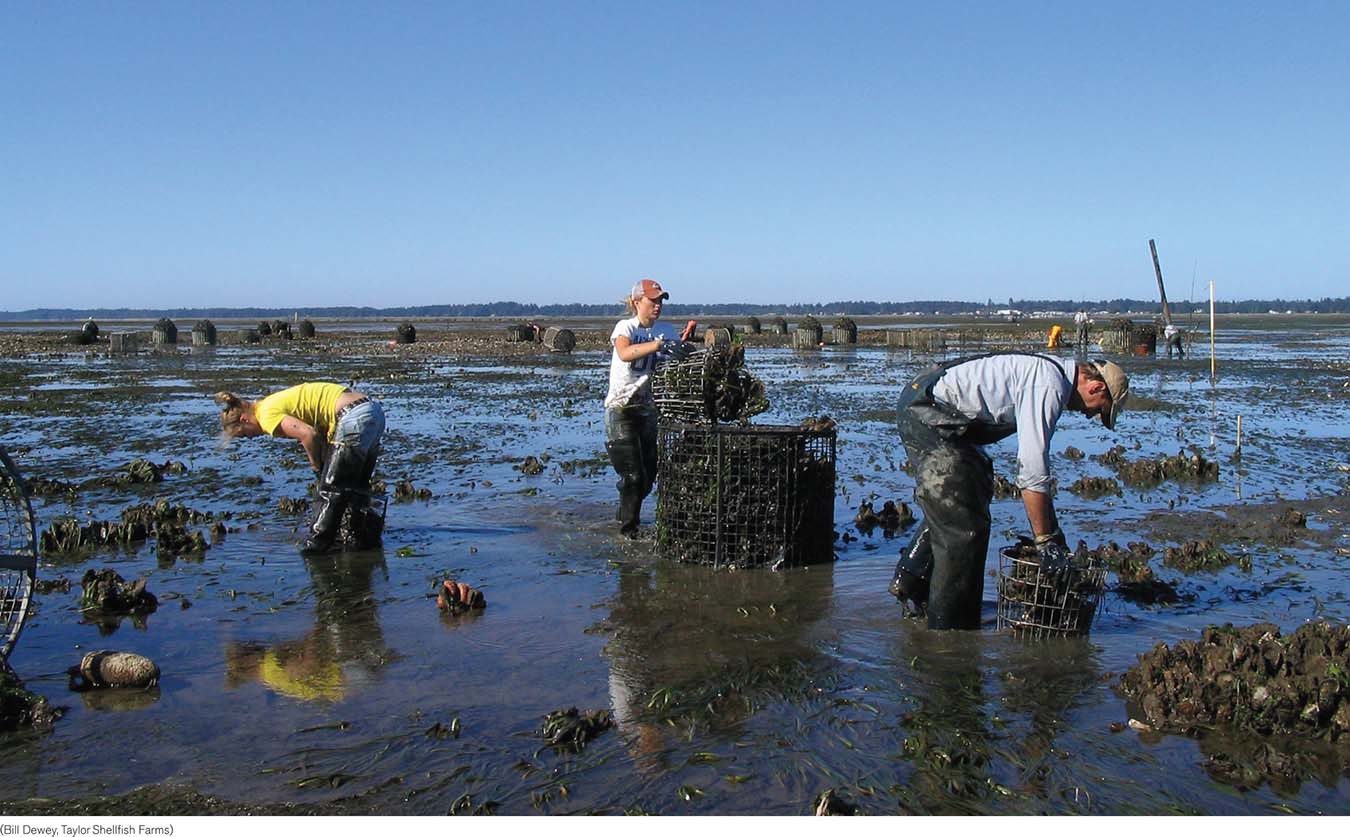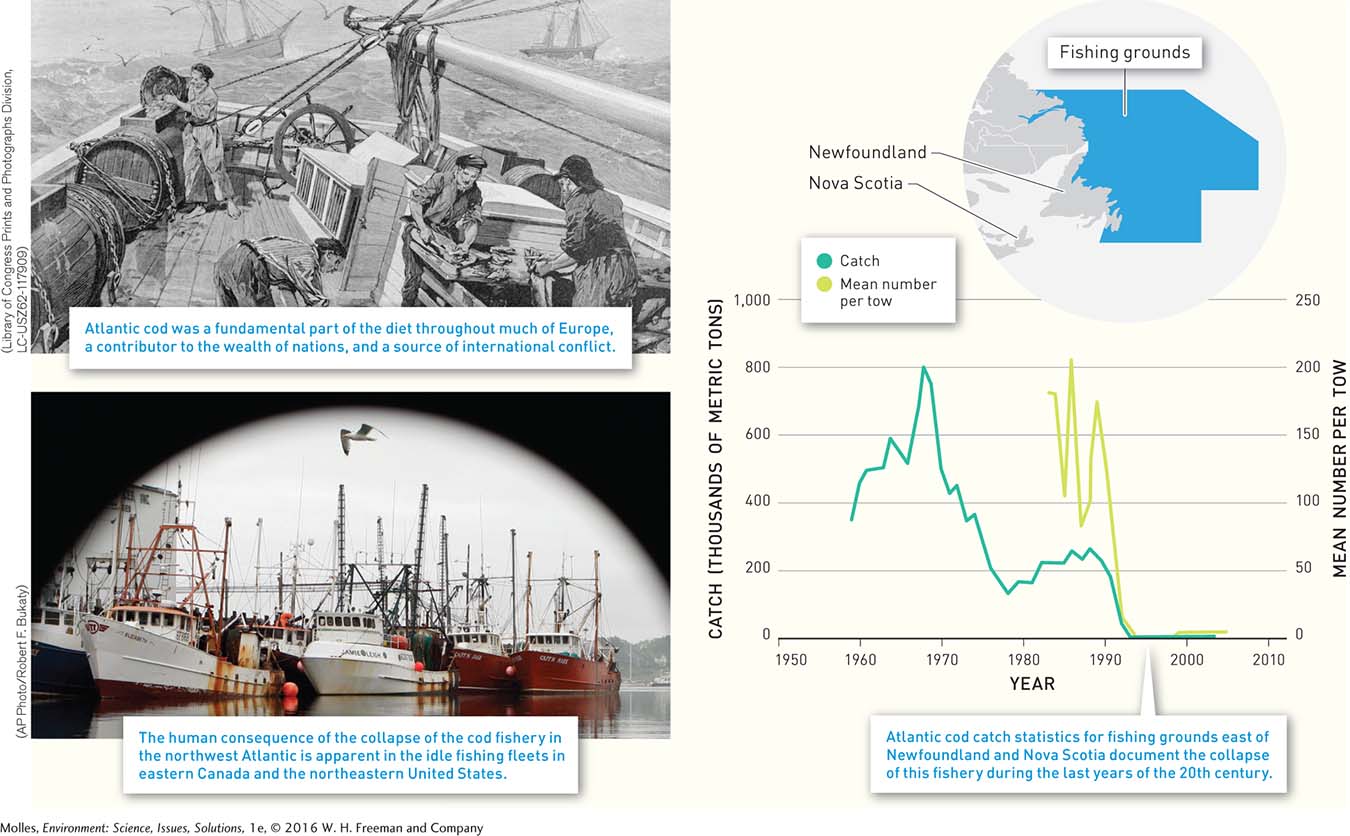Chapter Introduction
CHAPTER 8
Sustaining Aquatic Resources

Central Question: Can we sustainably manage fisheries and aquaculture?
 SCIENCE
SCIENCE
Describe the ways in which fish and shellfish are harvested and how the physical environment influences the availability of aquatic resources.
 ISSUES
ISSUES
Analyze the impacts of humans on aquatic resources.
 SOLUTIONS
SOLUTIONS
Discuss approaches for developing more sustainable aquaculture and fisheries.
A Tale of Overharvesting and Fishery Collapse
When Europeans first began fishing for Atlantic cod off North America, they encountered an astonishing abundance of fish. Now, five centuries later, that natural wealth is nearly gone.

The Atlantic cod (Gadus morhua) is a bottom-
fishery A population of fish or shellfish, and the economic system involved in harvesting the population, often identified by the geographic area where the fish or shellfish are harvested.
But in the spring of 1992, fishing boats returned to ports from New Bedford, Massachusetts, to Halifax, Nova Scotia, with their hulls nearly empty. Cod stocks dropped to less than 1% of historic levels, and regulators shut down the prime fishing grounds on Georges Bank, an elevated plateau off the Atlantic coast of the United States and Canada. Retailers everywhere switched white fish recipes from cod to Alaskan pollock and New Zealand hoki. The cod fishery had collapsed.
“If the oceans don’t make it, neither will we.”
Jackson Browne, “If I Could Be Anywhere,” 2010
fisheries collapse The decline in a certain species’ annual catch below 10% of its historic catch.
Fisheries collapse occurs when annual catches of the species in question decline below 10% of the historic catch. Today, following the collapse of the cod fishery in the northwest Atlantic and the subsequent closing of the fishing grounds, the fishing fleets that harvested hundreds of thousands of tons of cod each year now sit idle. What factors led to the collapse of this, and other, fisheries in the United States? What, if anything, can be done to restore valuable fisheries here and around the world? In this chapter, we will explore the science behind fisheries and what steps we need to take to restore them to their former health.
The collapse of the rich cod fishery off New England and Canada is not unique. Similar crashes have occurred in other fisheries around the world due to the rise of industrial fishing in the 20th century. In the United States, the National Oceanic and Atmospheric Administration (NOAA) considers 40 fish stocks to be overfished and 28 subject to continued overfishing. Once a major fish exporter, the United States now imports the majority of its seafood. These fishery declines threaten marine species with extinction, as well as the food webs and productivity of marine ecosystems, which in turn affects the human communities that depend on them for ecosystem services and economic livelihood.
Central Question
Can we sustainably manage fisheries and aquaculture?